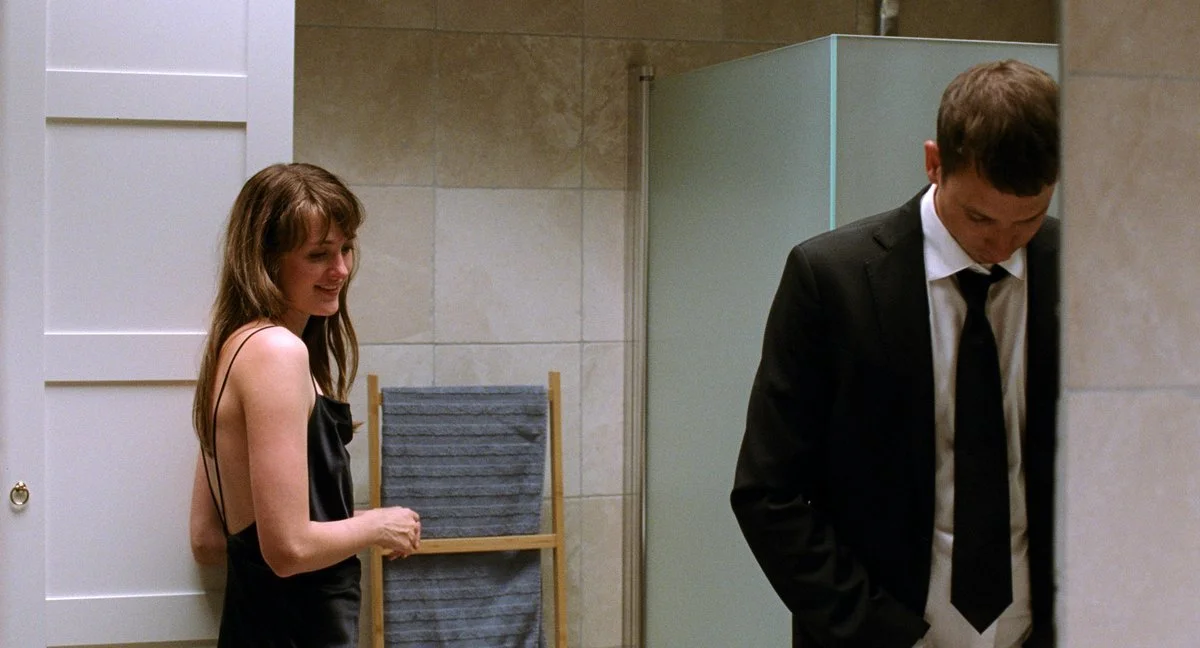THE WORST PERSON IN THE WORLD
Directing: A
Acting: A
Writing: A
Cinematography: A-
Editing: A
I love pretty much everything about The Worst Person in the World. I can think of no real criticisms. No notes!
No, wait! I just thought of one thing. The main character, Julie, is constantly pulling shirts on without pulling her hair out from under it. She’s regularly just walking around with her hair stuck under her shirt, which drove me crazy. Pull your hair out of your shirt, Julie!
Also, I do have a complaint about the marketers of this movie—which is not a criticism of the movie itself, even though it does result in seeing a movie slightly different from what was expected. People are calling this a “romantic comedy,” and that’s really not at all what it is. It’s an alternately charming and moving romantic drama that has two or three chuckles. Don’t go into this movie expecting hilarity.
Once past that, though, it’s hard not to love it. My love for it grew over time, even as Julie progressively came to terms with the aimlessness of her life. But also, I found things to love from the opening shot. As in, I have to mention and compliment cinematographer Kasper Tuxen (who also shot the also-fantastic Riders of Justice), who gives The Worst Person in the World a kind of visual artistry seldom seen in movies of this sort.
It’s easy to go into this film think of it as minor or slight, but director and co-writer Joachim Trier infuses this story with a unique depth and nuance, bucking nearly all the conventions of romantic films. Rather than a story about a woman and a man finding their way to each other, this is about Julie finding a way to herself. She has relationships with two different men in the story, both of equal importance and significance but for different reasons.
I love that this is the woman’s story. I love that it also sidesteps the expected trajectory of “girl meets boy, girl loses boy, girl gets girl back.” I love that the cinematography is noticeably good from the opening shot. I love the sequence (or “chapter,” as this is presented as “twelve chapters with a prologue and an epilogue”) in which Julie meets her second love interest, Eivind, where they talk about and straddle the line they would have to cross before they would consider it “cheating.” It crackles with erotic tension and settles into a casual hang, simultaneously.
I love the performances, particularly of its three leads: Renate Reinsve as Julie; Anders Danielsen Lie (also seen recently in Bergman Island) as Aksel, Julie’s first love interest; and Herbert Nordrum as Eivind. We are given multiple close-ups of the faces of all three of these actors, in every instance offering both subtle and great detail of expression: a nervous smile, the movement of the eyes that betrays a lie.
I love that Joachim Trier gives us the time needed to see how Julie’s relationships organically develop, in very different ways, the second one beginning, as so often happens, before the first one ends. In both cases, these men offers Julie what she needs in some areas but fall short in others. Julie is just turning thirty while Aksel is in his forties and puts undo pressure on her to start a family. Eivind is so environmentally conscious he doesn’t want children, but he is not very well read and cannot provide the kind of intellectually stimulating conversation that Aksel did. I think the breakup scene between Julie and Aksel will be deeply relatable to many, from both sides of that particular exchange. Conversely, a sequence in which Julie runs weaving through citizens of Oslo frozen in time so she can have a clandestine meetup with Eivind is uniquely charming.
Much like Drive My Car, The Worst Person in the World very briefly acknowledges the pandemic in its final sequence, showing people wearing face masks, this time while Julie is on a job as a photographer. I’m not sure what the point of that is, exactly, except perhaps to convey the passage of time: we are now in the present day, when the ubiquity of mitigation measures cannot be avoided or go unacknowledged. I don’t mention this as a complaint, just an observation. The way art deals with the reality of the current world situation is sometimes fascinating, and in this case, it gets fairly quickly gleaned over by—spoiler alert!—what I would consider a happy ending, just not a conventional one.
And that gets to the heart of why I loved The Worst Person in the World: it succeeds on every level, and on every level it does so unconventionally. All of the characters ring true, as do all of their behaviors, offering a fundamentally realistic portrait of romance and humanity, with a subtly artistic visual flair. Hanging out with Julie is an eminently pleasant experience, even though she’s as flawed as anyone—arguably more so even than the men she gets with. Perhaps this film’s most impressive feat is how it never puts on airs of high-minded art and still winds up being a fine specimen of artistic accomplishment.
If Julie can be relied on for anything, it would be getting to know people in uncnoventional ways.
Overall: A

